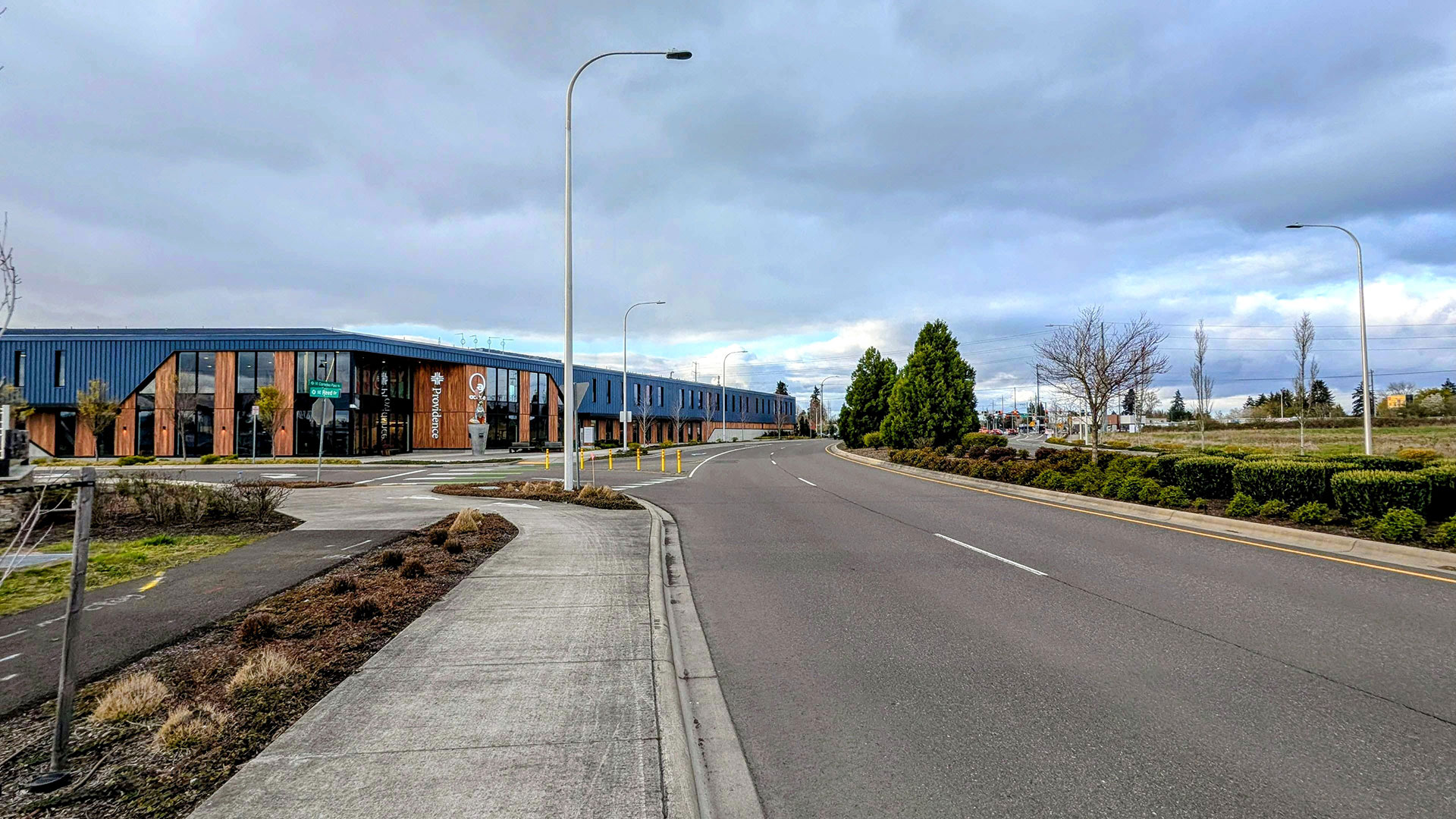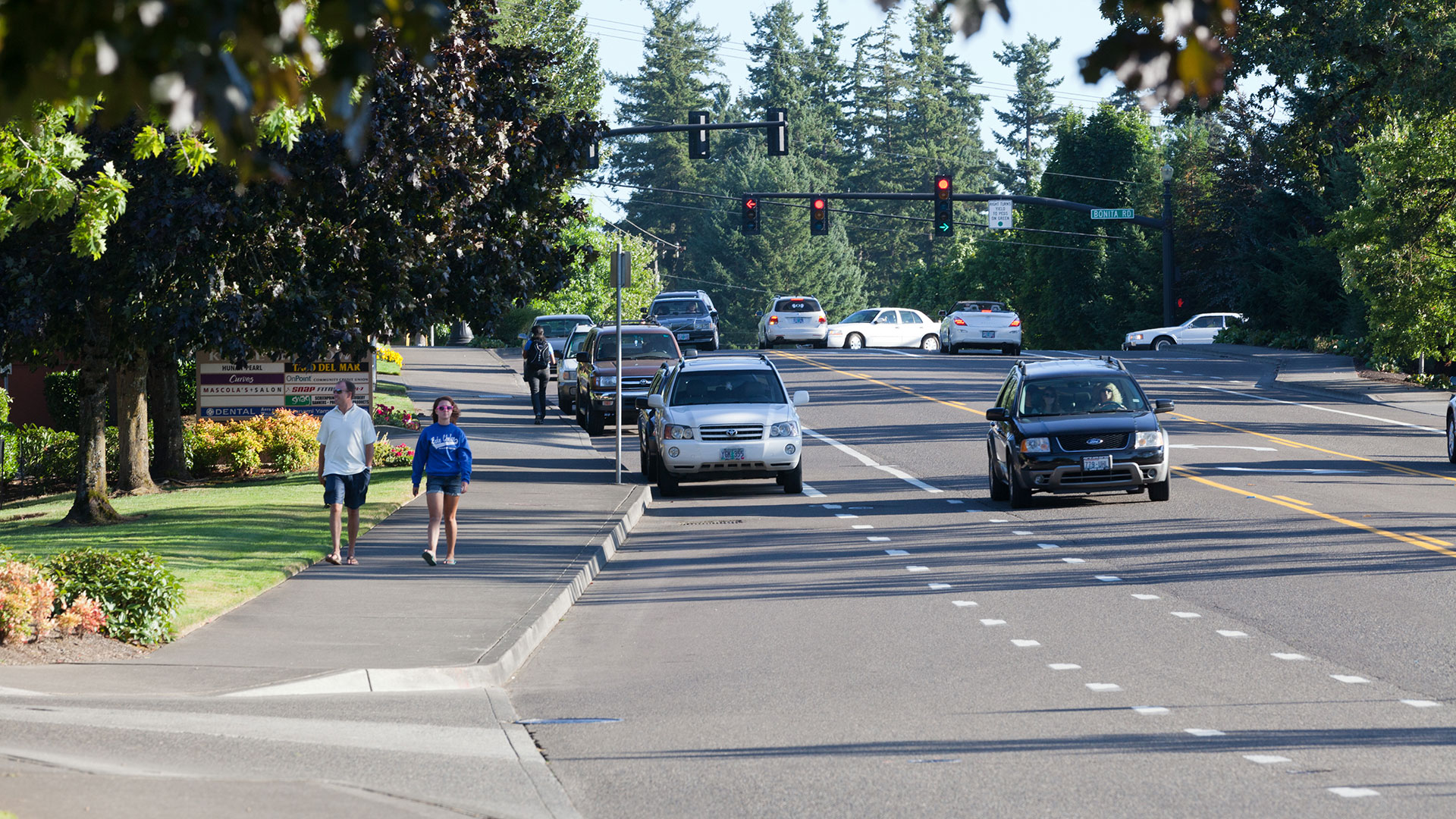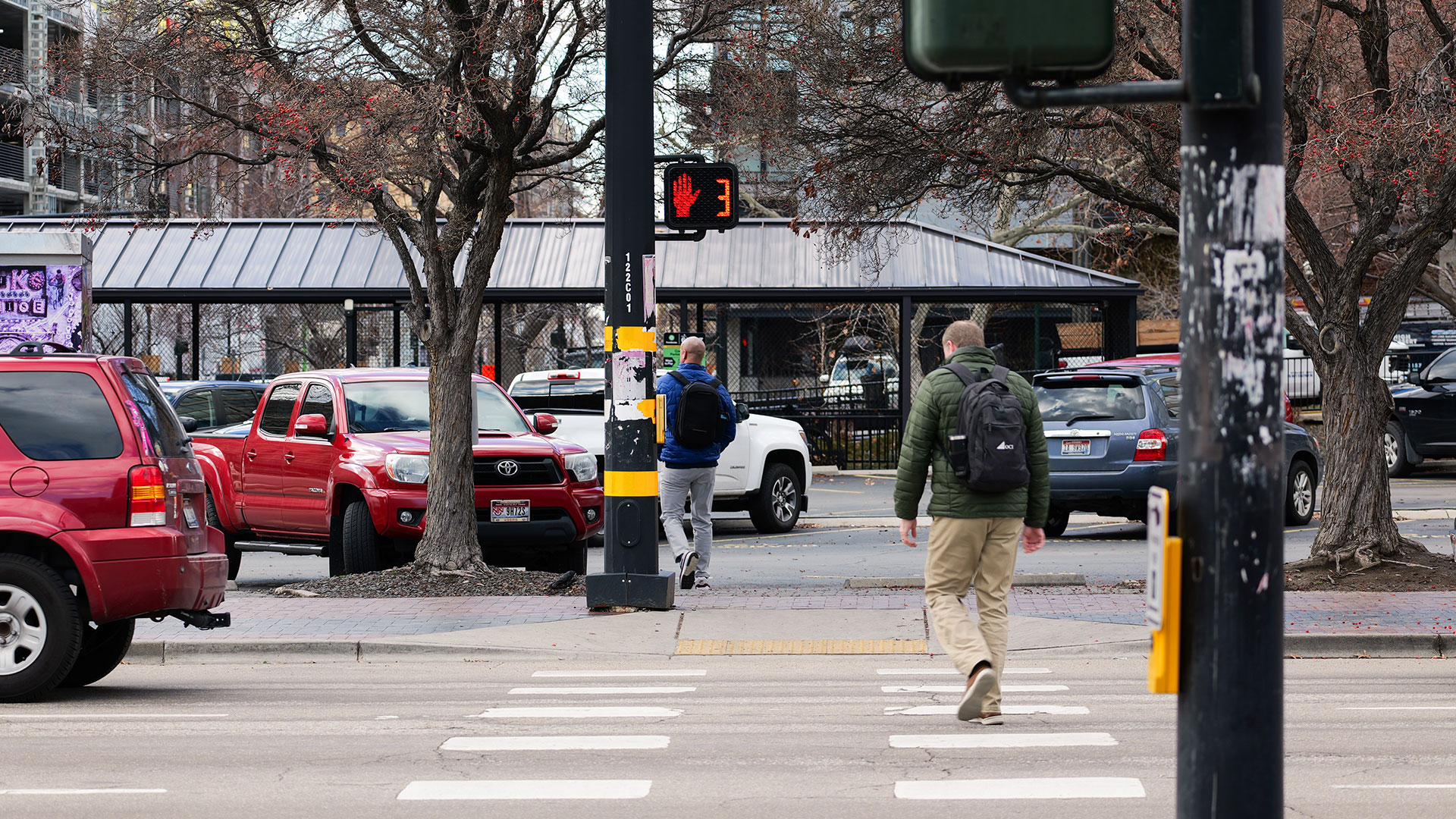March 31, 2025
Perhaps you’ve heard the term access management mentioned in project scopes, transportation guidebooks and Transportation Research Board session titles, but what does this work actually entail? Read on to learn the fundamentals of this critical consideration at the intersection of land use and transportation.
A basic definition of access management is the coordinated planning, regulation, and design of access points between roadways and land developments. This can include driveway and intersection spacing, implementing turn restrictions, adding raised medians to manage traffic flow, and other tactics to holistically manage access points to optimize traffic flow and safety.

A basic definition of access management is the coordinated planning, regulation, and design of access points between roadways and land developments.
Why is Access Management Important?
Effective access management offers many benefits, including:
- Improved Traffic Flow: It can reduce traffic congestion through the proper spacing of intersections and traffic signals.
- Enhanced Safety: It can reduce the likelihood of crashes by managing conflict points.
- Support for Development: It can facilitate smoother integration of new developments with existing transportation networks.
It’s important to note that access management isn’t just about vehicles. It also considers the needs of people walking, biking, and taking transit. For example, reducing and separating driveways can improve pedestrian safety and accessibility.
The Four Pillars of Access Management
Access management is built on the key pillars of safety, economy, mobility, and livability.
Safety
Access management has the potential to significantly enhance road safety by reducing crash rates. As the number of access points on a corridor increases, we typically see the crash rate also increase, often exponentially. By implementing appropriate treatments, such as raised medians, turn restrictions, and access consolidation, crashes at intersections or along corridors can be significantly reduced.
Economy
Effective access management boosts the economy by increasing the market area of businesses, which is defined by how long individuals are willing to travel to reach a destination (this distance can vary depending on the type of business and the mode of transportation. For example, people may be willing to travel further to visit a destination business like a movie theatre, while pass-by businesses like gas stations rely mainly on convenience for attracting customers). Well-managed corridors allow people to traverse more safely in less time, making them more likely to visit businesses along these routes. Additionally, aesthetically pleasing environments with trees and landscaping attract more visitors. Surveys of business owners often reveal positive outcomes following the implementation of access management treatments.
Mobility
Access management can improve mobility by minimizing speed differential. Properly spaced access points and signals help maintain free flow speeds and reduce travel time. For example, according to the Access Management Manual, 2nd Edition, every 10 access points per mile can decrease speeds by about 2.5 mph (Exhibit 2-12). Traffic signals have an even greater impact on travel time. Going from ½-mile to ¼-mile signal spacing on a corridor could increase travel time by 16% (Exhibit 2-13).
Livability
Access management can enhance livability by creating more pleasant and functional environments. Well-designed corridors with fewer conflict points and slower speeds contribute to a better quality of life for residents and visitors.

According to the Access Management Manual, 2nd Edition, going from 1/2-mile to 1/4-mile signal spacing on a corridor could increase travel time by 16%.
Transportation Trade-offs in Access Management
While some treatments may increase travel time for specific movements, they often result in greater overall corridor benefits. For example, replacing left-turns at a traffic signal with midblock U-turns can improve mobility and speed for the majority of users. However, it’s essential to consider the trade-offs between different users, such as drivers and bicyclists, as each mode of transportation may experience unique impacts.
Major retailers often prefer to locate on the northwest or southeast corners of signalized intersections, since the intersection provides people driving more time and opportunity to see the destination up ahead and then turn right into it after going through the intersection. However, these locations can become congested during peak hours, when the businesses need them the most. Queues from traffic signals can block driveways, reducing their effectiveness and creating safety and capacity concerns. By placing driveways further back from intersections or moving them off the major road to a minor road, access management can improve safety and traffic flow.
Land Use Trade-offs in Access Management
Assessing tradeoffs is also critical from the land use perspective. Local jurisdictions, such as cities and counties, have varying levels of authority to regulate where access is allowed. Every property has a right to reasonable access, but this does not necessarily mean unlimited access. Reasonable access can include:
- Right-in/right-out access: Limiting access to right turns only.
- Access from a minor road: Requiring properties on the corner of two roadways to take access from the less busy road.
Cities and counties can include requirements in their codes for cross access or shared access. This means that two parcels may share one driveway, reducing the number of access points and improving traffic flow. Additionally, rear access can be required to further enhance circulation.
Where Should the Parking Go?
Access management also encompasses decisions like where to place parking near a development. Traditional strip mall developments typically feature buildings set back from the roadway with parking lots in front. While this design is common, large parking lots are not visually appealing, and this layout is less friendly to pedestrians and transit users, as it requires them to navigate through parking lots to reach the buildings. Modern developments often place buildings closer to the roadway with parking behind. This design offers several advantages, including better driveway spacing, an easier time for people walking and biking to access the facilities, and better aesthetic appeal, with the architecture of the buildings taking center stage rather than large parking lots.

Access management also encompasses decisions like where to place parking near a development.
Service Roads and Access Management
Service roads, also known as reverse frontage roads, rear access roads, backage roads, or quadrant roads, are designed to improve circulation and reduce congestion on main roads. These roads can be either private or public and are typically located behind buildings, keeping sidewalks, trees, and buildings in the front and parking, driveways, and other unsightly elements in the back.
Service roads offer several advantages:
- Dual-Sided Development: Unlike frontage roads, service roads allow for development on both sides, maximizing land use and providing greater separation from main intersections.
- Lower Maintenance Costs: With buildings on both sides, the maintenance cost per frontage foot of road is reduced (compared to a frontage road).
- Traffic Diversion: Service roads can help divert traffic away from major intersections, reducing congestion and improving traffic flow on the major road. Drivers may use these roads to make right turns and avoid queues at traffic signals.
Multimodal Considerations of Access Management
The concept behind Complete Streets is designing roadways that meet the needs of all users, including pedestrians, bicyclists, transit users, and drivers, based on the street and community’s context. Access management can contribute to these goals by reducing conflict points, which enhances safety for all users. For instance, raised medians and consolidated driveways can result in a dramatic reduction in conflict points between drivers and pedestrians, as people on foot or bicycle have fewer driveways to cross and motorists only have one direction they can turn. This benefits both types of users.
Access Management Resources
Are you ready to dive further into this topic? While a variety of research and guidance has been published on access management over time, the industry’s premier current guidance includes:
- Access Management Manual (2nd Edition): The industry’s go-to guide on access management approaches and practices. The 2nd edition was released in 2014, and TRB’s Access Management Committee is beginning to think about what new research should be included in a future 3rd edition.
- Access Management Application Guidelines: An accompanying document that provides practical, how-to guidance for applying the information in the Access Management Manual.
- NCHRP Research Report 900: Given that access management is historically vehicular-focused, this report expands the definition to focus on multimodal corridor access management, addressing impacts of access management treatments on all roadway users.
- NCHRP 1032: A toolkit for measuring and communicating the value of access management, including visuals and presentation materials that address questions both transportation professionals and developers may have about access management.
Continue the Conversation
Access management is the multifaceted merging of transportation and land use goals to enhance safety, mobility, economy, and livability. The benefits are often surprising to those involved in access management projects. If you’d like to learn more about our work in this area, don’t hesitate to reach out! We were honored to lead the development of several of the documents listed above, and always enjoy a good chat on this topic.
